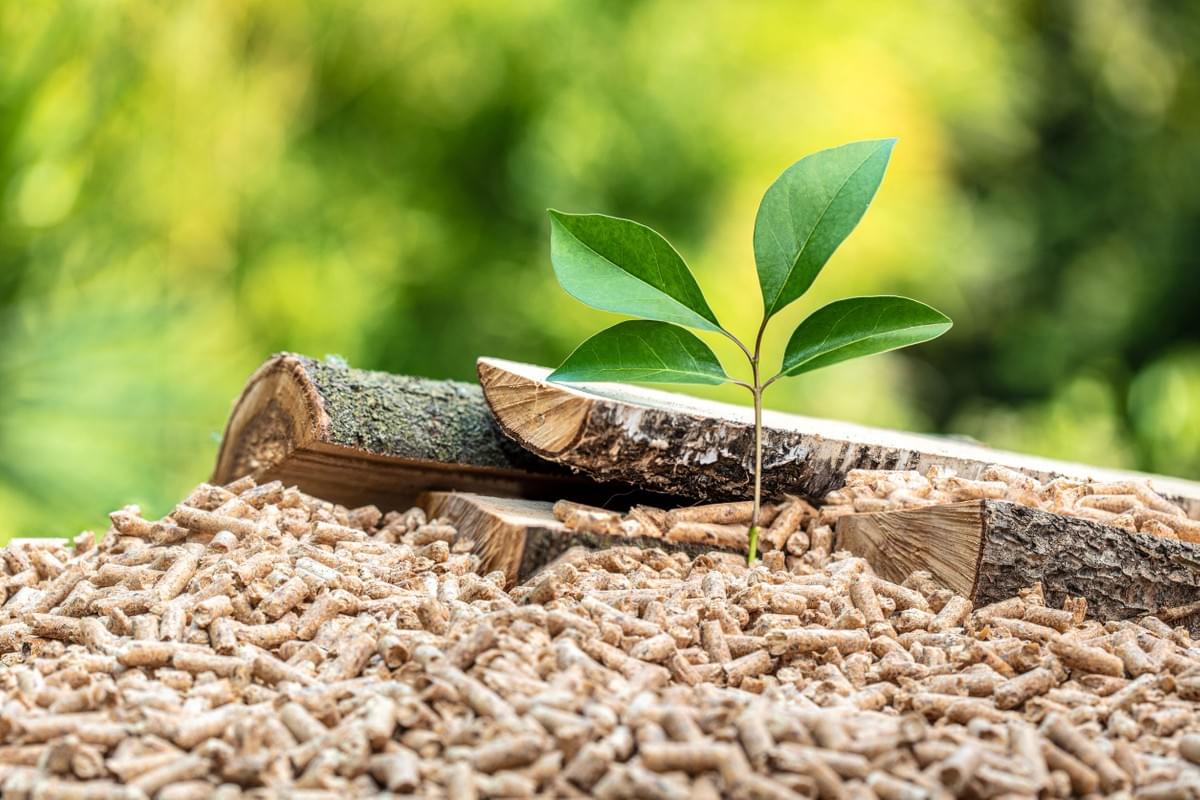

What are wood pellets?
Complete Carbon Cycle Mechanism

Appearance of wood pellets
Wood pellets are dried wood that is crushed and shaped by extrusion.
The appearance and combustion state of the pellets are shown in the left figure. They are round rods with a diameter of 6-8mm and a length of 5-40mm. They are mainly used as fuel for furnaces and boilers.

Zero carbon emission
Because the raw material of wood pellets comes from trees, and the trees absorb carbon dioxide in the air during photosynthesis during the growth process and fix it in wood (the carbon element in wood accounts for 50%). The carbon dioxide produced when the wood pellets are burned only emits the carbon dioxide absorbed by the trees during their growth into the atmosphere, and does not cause an increase in the concentration of carbon dioxide in the atmosphere. Therefore, the wood pellet fuel is a carbon-neutral environmentally friendly fuel.

Stable and fast combustion
Generally, crop straw and wood chips have the disadvantages of looseness, low density, and low calorific value per unit volume. Combustion characteristics of straw, etc., to achieve fast and clean combustion.
Biomass briquette fuel briquette technology is to compress loose and finely divided orange stalks and agricultural waste into compact granular fuel through crushing, drying, mechanical pressing and other processes, and its energy density is about ten times higher than that before processing. This biomass briquette fuel is convenient for storage and transportation, and the soot and SO2 emitted after combustion are far lower than that of heavy oil. It is a high-grade fuel suitable for industrial boilers.
Biomass briquette fuel can be regarded as a kind of green coal, which is a new type of clean energy.
Why Choose Wood Pellets?
irreplaceable advantages

less dangerous to transport
If the tanker transporting oil breaks or leaks oil, it will cause environmental pollution of the ocean or groundwater sources, and may also explode causing casualties. The transportation of wood pellets is less prone to similar accidents. Moreover, wood pellets are better stored and transported over long distances, and it is also convenient to place them in storage boxes according to customer needs.

Supply and price stability
Because wood is recyclable, it is generally sourced from the place of origin. With the stable and continuous development of the market, the source of wood pellets is highly stable. The annual heating cost calculation in European and American countries is an economic issue that must be carefully calculated for every family. Compared with the instability of oil prices, many consumers are more willing to buy wood pellets.

Greenhouse gas reduction
Compared with other traditional energy sources (oil, natural gas, coal), wood pellets are more environmentally friendly. If a family unit can convert heating oil into wood pellets, it can reduce carbon dioxide emissions by about 5 metric tons per year.
Reduce Air Pollution
PM2.5 refers to particles with a diameter of less than 2.5 microns, which can directly enter the lungs of the human respiratory system, directly or indirectly affect the respiratory organs, and cause respiratory allergies, skin allergies, etc.
Burning raw coal and petroleum coke is one of the main sources of PM2.5. If raw coal and petroleum coke are banned, it is estimated that 5,595 tons (40%) of sulfur oxides, 757 tons (73%) of particulate matter, and nitrogen oxides can be reduced each year. 8,200 tons (53%) and other pollution sources, which are of great help to the improvement of air quality.

Renewable Energy Regulations
Continental countries import wood pellets from overseas, more than half of which are used in power plants. The EU Renewable Energy Law also strongly guides the development and use of renewable energy, and stipulates that EU member states must achieve renewable energy accounting for 20% of national energy use by 2020. At the Paris Climate Summit in December 2015, leaders from more than 200 countries gathered to jointly reduce global carbon emissions, hoping to reduce the speed of global warming, and encouraging local governments to commit to using renewable energy .








